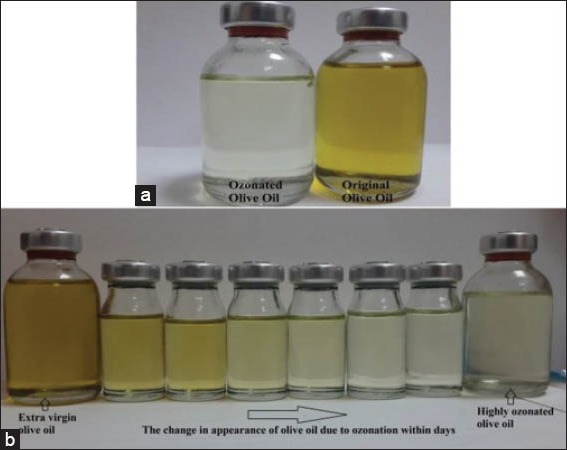How to Ozonate Olive Oil, and Traditional Uses
Introduction
Shortly after patenting his first ozone generator, Nikola Tesla ( in 1900 ) began marketing an ozonated olive oil to medical doctors. Nikola Tesla created his ozonated oil by bubbling ozone through pure olive oil in the presence of a magnetic field for eight weeks. By 1904, ozonated olive oil, also known as Glycozone, began appearing in medical literature, such as “The Medical Uses of Hydrozone and Glycozone”, 9th Edition, by New York Chemist Charles Marchland.
Ozone, as a very reactive gas, is difficult to stabilize for long periods of time in a usable form. However, by bubbling ozone through an ozone-resistant container ( such as a glass container ), the ozone gas is trapped and begins to react with the oil.
In essence, It is a catalytic reaction that actually burns the olive oil. One of the resultant compounds is C10H18O3, with a hydrogen and carbon complex. Some of the terpene gas remains trapped within the oil, and some are released into the environment.
While some people may believe that fully ozonated olive oil is an ozone carrier, the oxygen is actually bound and released as a peroxide ( O-O-H bond ). Ozonated olive oil will hold actual ozone gas for a limited amount of time but in its “free form” state.
How should olive oil be ozonated for?
The average time, depending on the type of ozone generator one is using, is about 3 weeks. Once olive oil is completely ozonated, it will actually turn into a nearly clear, gel substance. The smell of ozone being emitted from olive oil will be noticeable. The final product must be kept refrigerated at all times.
Ozonated oil is actually created by a redox reaction. The ozone literally burns the oil, and three primaries and organic peroxides are actually created throughout the entire process. In other words, the first peroxide created reacts a second time to produce a second peroxide, and then finally once again to form C10H18O3. The final process is quite noticeable as the entire substance will turn into white foam. Once this white foam settles, ozonating any further is pointless, as the original oil is no longer present, and the compounds have been taken to a state that no longer reacts with ozone.
According to research conducted by Hulda Clark, ozonated olive oil may be utilized anywhere from as little as 20 minutes to 12 hours of ozonation. Clark recommends the use of partially ozonated olive oil for internal use, as a part of a liver cleansing program, and in order to remove PCBs from the body ( by taking 2 tablespoons of partially ozonated olive oil three times a day for 2-3 weeks ).
Partially ozonated olive oil maintains the properties and characteristics of olive oil, prized as a fantastic skin conditioner. Since the ozone within the olive oil is still reacting, using partially ozonated olive oil may provide an additional stimulating effect on the skin, and such a formulation, if used shortly after ozonation, makes an excellent general skin conditioner.
However, please keep in mind that partially ozonated olive oil does not compare with fully ozonated olive oil for true therapeutic purposes.
Further Notes and Tips on Using Ozonated Olive Oil
Ozonated oil, or even partially ozonated oil, makes one of the most excellent facial skin conditioners available at any price. However, the application must be done properly to avoid problems.
Apply the oil to the face very liberally, being certain to massage deeply. Use enough oil to coat the skin, so that the pores are completely insulated. Allow the oil to remain on the skin for about twenty minutes. Then, using a paper towel, remove all of the excess oil on the surface of the skin. Failure to remove the surface oil may eventually cause skin problems.
Contact Us now with your opinion about the above article, and if you require more information on the subject or technical assistance with sizing an Ozone system


